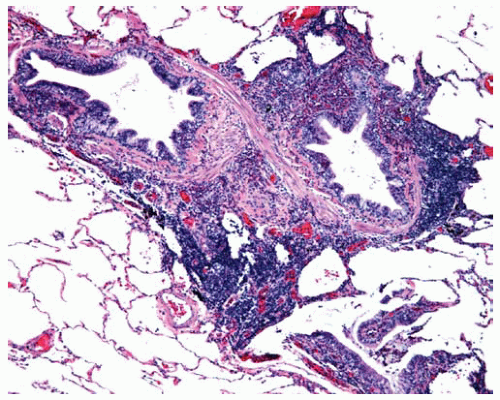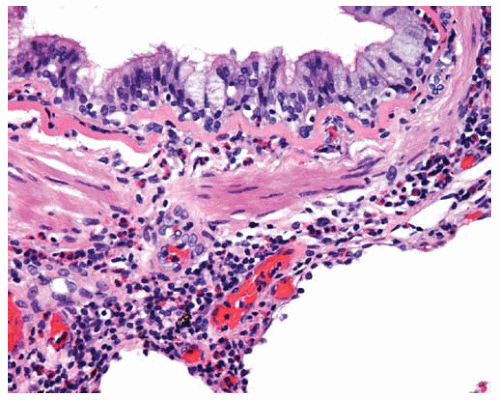Asthma
Alvaro C. Laga
Timothy C. Allen
Philip T. Cagle
Asthma is a disease characterized by increased irritability of the tracheobronchial tree with acute, episodic paroxysmal narrowing of the airways that may reverse spontaneously or as a result of pharmacologic therapy. Asthma may result from allergic and nonallergic stimuli and is associated with a variety of other conditions, including Churg-Strauss syndrome (see Chapter 50, Part 4).
Cytologic Features
In exfoliative cytology specimens, mucus, Curschmann spirals, Creola bodies, eosinophils, and Charcot-Leyden crystals (see Chapters 8 and 9).
Histologic Features
Bronchial walls permeated by a mixed inflammatory infiltrate rich in eosinophils.
Hyperplastic bronchial and bronchiolar smooth muscle.
Goblet-cell metaplasia of bronchial and bronchiolar epithelia.
Thick mucous plugs within bronchial lumens.
Basement membrane thickening.
 Figure 59.1 Low power shows airway inflammation and hyperplastic smooth muscle in a patient with asthma. |
 Figure 59.2 High power shows an airway with a mixed eosinophil-rich inflammatory infiltrate, hyperplastic bronchiolar smooth muscle, goblet-cell metaplasia, and a thickened basement membrane.
Stay updated, free articles. Join our Telegram channel
Full access? Get Clinical Tree
 Get Clinical Tree app for offline access
Get Clinical Tree app for offline access

|